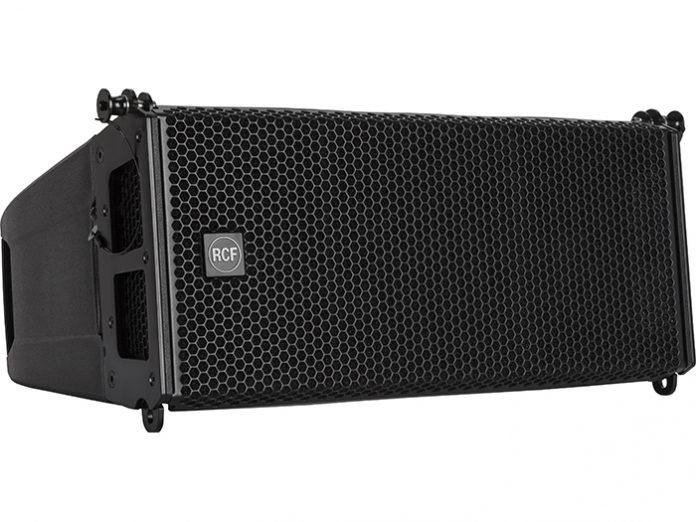RCF’s best selling HDL range of composite line array enclosures has received a further boost with the announcement of two new models. All have optimized control, since all have the latest version of RDNet, RCF’s proprietary monitoring and management platform, onboard.
The RCF HDL 26-A was a development of the RCF HDL 6-A and is a double 6-inch device with a 3-inch compression driver – rather than the 1-inch CD found in the RCF HDL 6-A. Replacing the 1400W amplifier is the updated and newly developed 2000W Class-D amplifier. The smallest member of the RCF HDL family allowed an extended bottom end and a pristine sound for a wide range of applications and configurations.
Also new to the series was the RCF HDL 28-A which built on the success of the popular RCF HDL 10-A, suitable for a wide range of applications, both indoors and outdoors. Because the woofer was a two by the eight-inch device, with the 2.5-inch voice coil and a 2200W Class-D amplifier, it is capable of far more bottom end, pristine mids and low distortion, with an emphasis on vocal intelligibility.
Speaking of the design rationale, although these models draw on the heritage of earlier successful HDL models, only the cabinets remain the same. RCF has re-engineered the new system speakers, and these will now be known as HDL Systems to denote the fact that RDNet is onboard. By using more powerful woofers, there is a significant extension in the low end, while the larger compression drivers deliver a higher SPL and less distortion for increased intelligibility—which is essential on professional applications.
With the addition of the RDNet Networked Management protocol, the advantages of having these speakers on the network are highly significant. RDNet 3.2 allows the design of the arrays inside the management software, recognising and connecting them immediately when turning on the devices. While the new Bass Shaper function will allow adjustment of the line array low frequencies, the Air Compensation function now corrects the system response in real-time.






